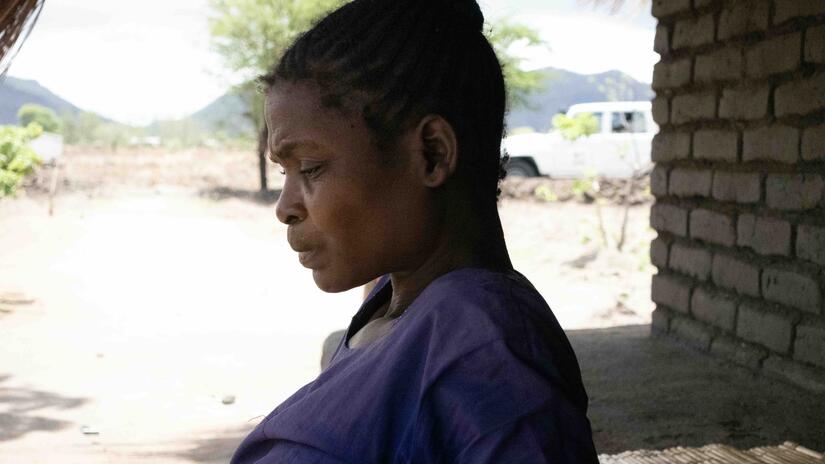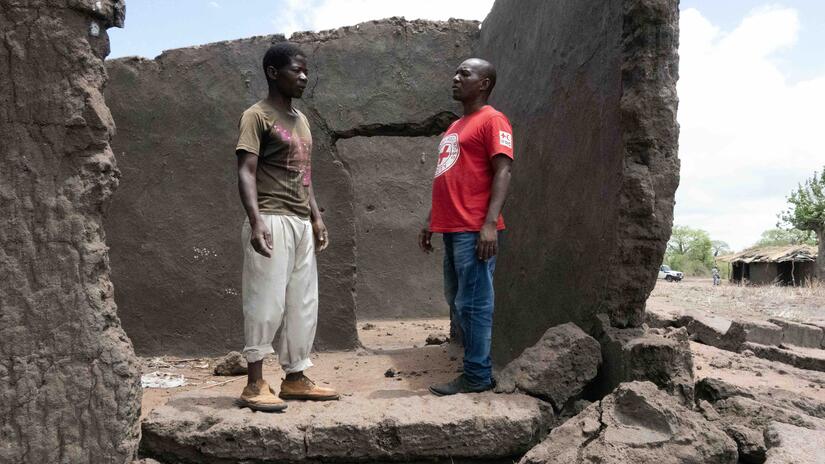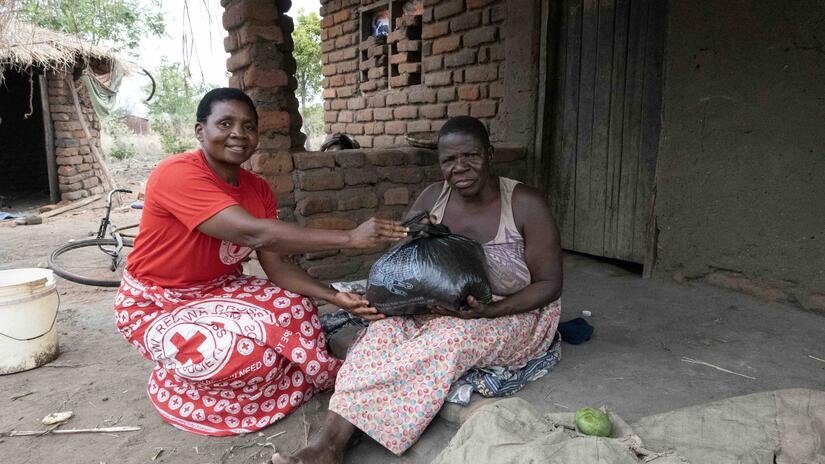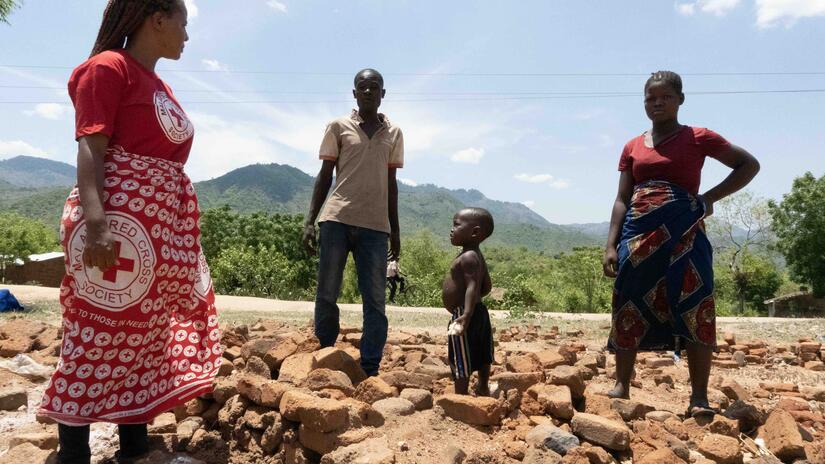By Anne Wanjiru
IFRC Senior Communications Officer
Almost every family in Malawi is a farming family, a source of great strength for the country’s economy. This was seen a few decades ago when the country was regularly exporting agricultural produce to neighboring nations.
However, this means most families have also been extremely vulnerable to climatic stresses and shocks.
"Year after year, it’s been getting harder to get good yields from farming and get a good earning,” says Martha Makaniko, a farmer from Chiwalo village in Mulanje. “We no longer rely on regular weather patterns. I used to get eight bags of maize from my field. Now I would be lucky to get two. I have prepared my land awaiting the rains but have no money to buy seeds or fertilizer."
When tropical cyclone Freddy hit Malawi in March 2023, Martha watched as her entire crop was washed away. Like thousands of other farming families, she not only lost her crops.
“My house collapsed,” says Martha, who is also ill and in need of money for medical assistance. “I stayed in the shelter for several months. I spent my entire lifesavings building a new house. This set me back. We eat nothing, but porridge made from raw mangoes.”

Martha Makaniko, a farmer from Chiwalo village in southern Malawi whose crops were destroyed by floods from Cyclone Freddy.
Photo: Anne Wanjiru/IFRC
Boiled fruit and poisoned yams
People don’t normally boil fruit for food in Malawi, so Martha’s mango porridge is an indication that a lot of families are running out of choices. According to the Malawi government’s Vulnerability Assessment Committee Report, more than 4.4 million people are facing hunger.
The economic downturn, as well as the ripple effects of the COVID-19 pandemic and the Russia-Ukraine conflict have all exacerbated the hunger situation in Malawi.
In the last 18 months, Malawi’s currency – the Malawian Kwacha – has been devalued twice. This has caused inflation on everything, including critical supplies such as seeds and fertilizer.
Some farmers find it too expensive to manage their own farms, and decide to do piecework in other people’s fields, a common coping alternative among farming families that is also proving to be very competitive.
Those that cannot find any piece work at all will scavenge for wild yams or raw mangoes to boil and feed their families.
A variety of wild yams is poisonous, however, and the difference can be hard to tell. Fani Mayesu recently lost her husband and 19-year-old son after consuming poisonous wild yams.
“We didn’t know they were poisonous,” she says, with a look of disbelief. “My husband brought them, I prepared them, and we all ate. Immediately we begun getting sick and vomiting. My other 5 children and I recovered but not my husband and one son.”

Malawi Red Cross with farmer whose home was destroyed by floods that also swept away his crops.
Photo: Anne Wanjiru/IFRC
El Nino’s first waves
According to forecasts, the situation is likely to get worse before it gets better. International and national Meteorological agencies say the upcoming 2023/24 rainy season (also known as the lean season when food supplies diminish) in Malawi is expected to be influenced by El Niño. In the past, El Niño conditions have been linked to a delayed start of the rainfall season, below-normal precipitation, and dry spells.
The Malawi Red Cross Society (MRCS) in its lean-season response plan will seek to prioritise highly affected districts. This is aimed at strengthening community capacity to cope with the food insecurity while sustaining other resilience building activities.
“We hope to not only address the immediate acute food security needs but to also respond to climate predictions through interventions such as distributing early maturing seed varieties,’ says Prisca Chisala, director of programmes and development at MRCS. “We also plan to support winter cropping and encourage crop diversification to adopt drought resistant crops to address the gaps in production.”
Red Cross response

Malawi Red Cross volunteers bring support in various forms: food, cash-based transfers and help with reducing risks from future weather events, among other things.
Photo: Anne Wanjiru/IFRC
Through the support of IFRC and partner National Societies, MRCS needs over CHF 3 million to help close to 100,000 people by:
• providing food assistance in forms of cash-based transfer, wet feeding in schools and in-kind support
• strengthening community resilience through promotion of livelihood and risk reduction,
• protection of all vulnerable groups from violence, sexual violence, exploitation, abuse and neglect and ensure that human rights are respected.
“It’s critical that we support the farming family’s resilience to attain a harvest after this rainy season, otherwise we will see significant rise in hunger levels,” says John Roche, head of IFRC's cluster delegation for Malawi. Zambia and Zimbabwe.
“Time is of essence here to avert a worsening situation from the El-Nino predictions. Only a rapid, effective, and well-resourced response is urgently needed to mitigate the crisis from long-term impacts.”

